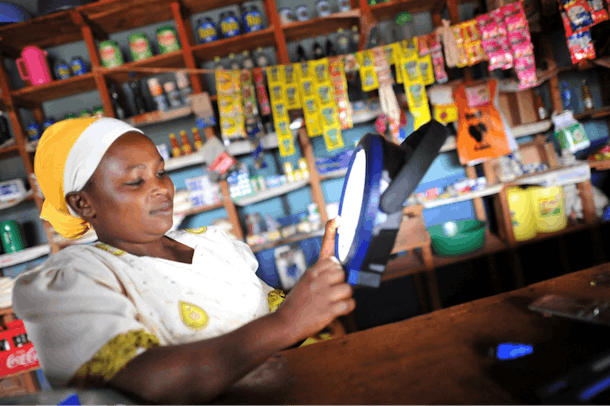Editor’s Note: This post is part of a special series in honor of International Women’s Day. Right now, the United Nations Foundation blog features posts on the world we picture for girls and women and the issues we need to address to advance women’s equality and empowerment. Share what you picture for girls and women on Twitter with the hashtag #PictureIt.
In Indonesia, they are called the “Wonder Women.” In Pakistan, they are the “Light Ladies.” And in East Africa, they are “Solar Sisters.” They are all micro-entrepreneurs organized through the work of women-led social enterprises like Kopernik, Buksh Foundation, and Solar Sister.
These enterprising women deliver clean, affordable modern energy solutions like small solar-powered lights to some of the most rural and poor communities across the world. The women micro-entrepreneurs are leaders in their own communities and foot soldiers for innovative clean energy solutions. And yet these “women helping women” endeavors so far constitute only a small cross-section of the many innovative enterprises leading the transition to a future where clean, affordable and reliable energy is available to all.
The United Nations Foundation’s Energy Access Practitioner Network has drawn together some 2,000 clean energy enterprises working in over 170 countries. In a 2014 report, “Growing the Network, Building Impact,” Network members said fewer than 10% of their innovative enterprises are led or owned by women.
Women are on the frontlines of energy poverty and climate change and should be playing a larger role in delivering reliable and affordable modern energy services to the 1.2 billion people who lack them today, in order to reach the UN’s goal of universal modern energy access by 2030.
As (unpaid) caretakers of the household, women and girls in rural communities often forage for and cook with wood and other polluting fuels, use smoky kerosene for lighting, and may trek for miles to fetch water for their families, putting themselves in harm’s way, losing out on an education, and inhaling toxic smoke. Given these demands on women’s time and resources, one effect of energy poverty is to exclude women from the paid economy and trap them in unpaid roles at the level of the household and community.
Support for more women entrepreneurs working on the frontlines in designing and delivering targeted and appropriate solutions by and for women in these communities is needed if we are truly to eliminate energy poverty and achieve gender equality.
 Photo credit: Niwa Solar
Photo credit: Niwa Solar
In addition, the very lives of expectant mothers depend on access to clean, safe, and reliable energy. Without it, pregnant women must deliver in the dark and are unable to receive an emergency cesarean section at night. Without reliable electricity, women do not have access to life-saving vaccines and a vital continuum of pre- and post-natal maternal health care services.
The handful of inspiring stories of energy entrepreneurship from women around the world suggests a pathway out of poverty for women and girls, particularly from socio-economically disadvantaged communities, but their relatively small number shows that many women continue to be caught in discriminatory economic structures and left out of the shift to a cleaner and more equitable energy future for all.
The 1995 Beijing Declaration and Platform for Action described women’s equality and full participation in all spheres as “the only way” to build a sustainable future. The ongoing 20-year global review is an opportunity to renew the affirmation that women’s knowledge, agency, and collective action are central to climate change mitigation and adaptation and securing sustainable water and energy services for all.



 View All Blog Posts
View All Blog Posts